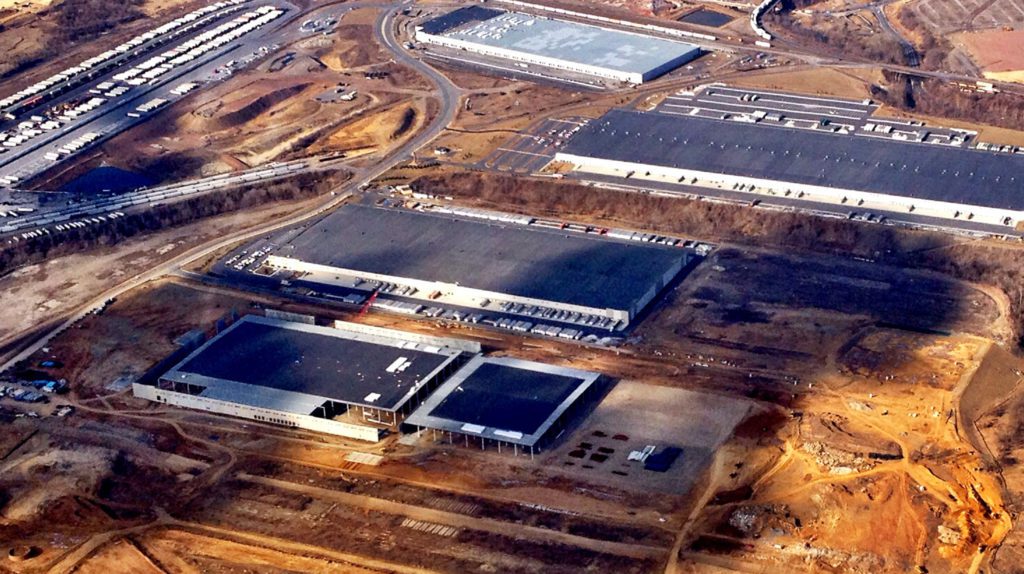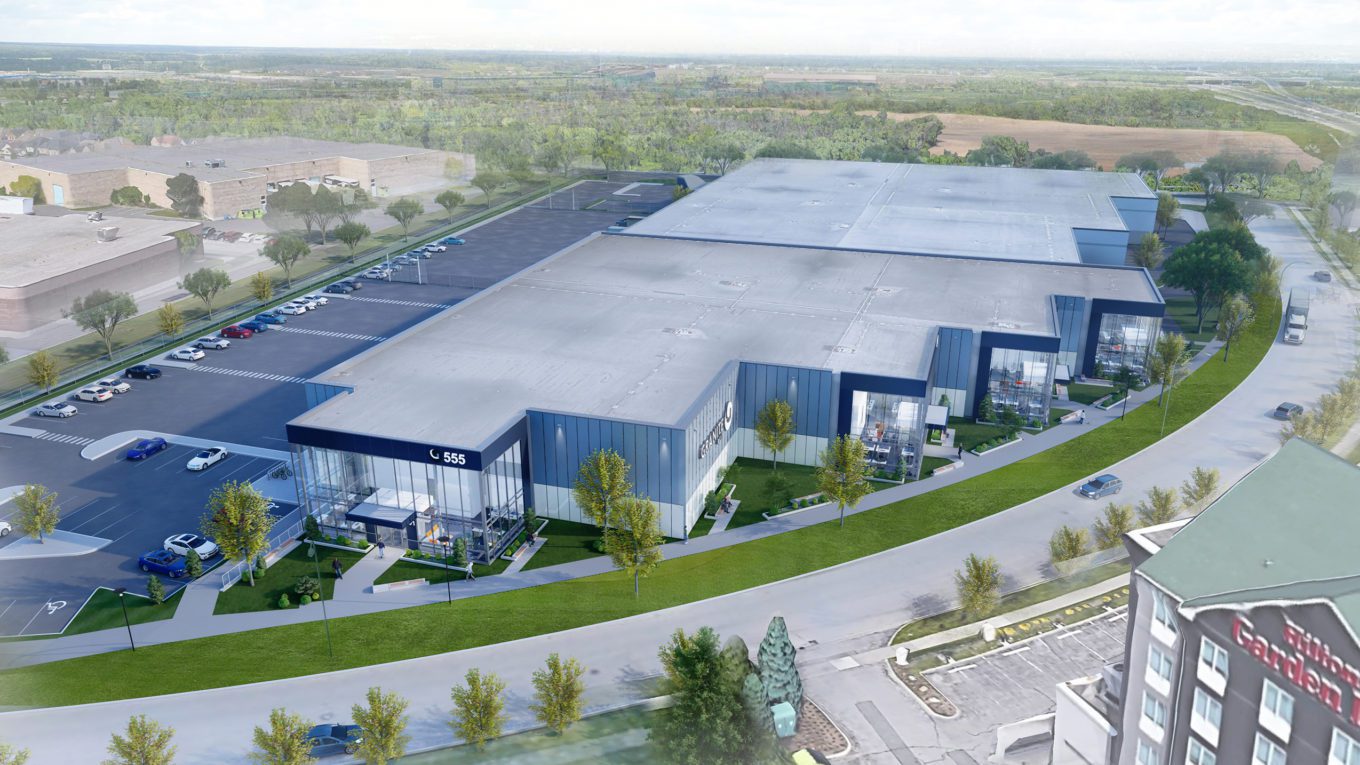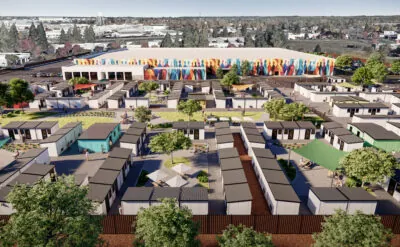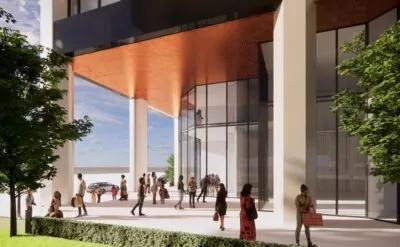The pandemic accelerated the existing strains on our global supply chain and exposed just how reliant we’ve become on manufacturing essential products, from stationery to fulfill our home offices to personal protective equipment. The demand for increased warehouse storage and smarter distribution services is dominating the industrial sector, challenging architects and engineers to provide solutions at breakneck speeds.
How will designers respond to the new requirements and demands? How will artificial intelligence, robotics and drones accelerate the explosion? Will the lines between Industrial and Retail continue to blur? Does micro-fulfillment and nano-fulfillment present a viable and long-term solution typology? Learn more in this thought leadership piece as Vice Presidents Doug Lang and Steve Kopp host a roundtable with integrated team members.
How have global events reshaped the global supply chain?
Douglas Lang, Vice President
Geopolitical events like Brexit, Canada’s rail blockades and multilateral trade agreements such as the Trans-Pacific Partnership have been straining the global supply chain well before the pandemic arrived. This in combination with non-pandemic events such as the recent interruption of trade movement through the Suez Canal has amplified current supply chain challenges and has illustrated that the length of the supply chain has a proportional impact to its vulnerability.
The pandemic has, without doubt, accelerated our dependency on e-commerce, and for the first time in a generation, sustained growth is being forecasted, and has been playing out in the manufacturing sector. Customer expectations for swift, safe and secure deliveries are forcing retailers and distributors to adapt to a change in buying habits and focus on speed-to-market solutions across the board.
William Westhafer, Vice President
Those customer expectations are higher than ever before. Everyone wants to order something and have it show up on their doorstep in two hours. The response from manufacturers is simple: design warehouses and distribution centers closer to urban settings. The last mile in delivery services accounts for in excess of 40% of transportation costs. Working in tandem with developers, corporations, and contractors, we are designing refrigerated and dry facilities closer to communities for faster delivery to help meet consumer demands.

How is NORR responding to the challenges of designing warehouses and distribution centers closer to residential neighborhoods?
Steven Kopp, Vice President
New considerations need to be made for distribution centers when they are close to where people live. In many instances, we are not only working with our clients but their neighbors and asked to be thoughtful related to design and innovations that can minimize pollution, noise and traffic. By using creative screening, acoustic walls, and landscape solutions, we can shield residents who live nearby from a facility’s operations. For example, we’re currently working on a 1 million square foot project that combines all of these strategies into one successful design. Designing to accommodate your clients’ future goals is also critical to success, in this particular case providing infrastructure for natural gas vehicles while also planning for electric vehicles in the future.
Scott Catallo, Principal
Many of these new facilities are being built in the “urban edge” – the area between high-density housing and suburban neighborhoods. Designing these facilities to blend into the surrounding environment is a break from the traditional idea of pre-built warehouses hidden near the highway. Today, we are taking great care to present designs that are scaled to the surrounding community and that take on characteristics of the neighborhood.
Redesigning existing sites is also a solution to the last-mile delivery challenge. In Sacramento, CA there are a number of downtown and midtown industrial building sites that are underutilized and ready for a distribution facility because of the necessary infrastructure, including a large lot and warehousing capabilities, where the zoning would not change. Residents are already accustomed to the noise and traffic in the area which is appealing to developers.
Douglas Lang, Vice President
This topic is near to my heart as NORR’s industrial research and development team is currently studying a modular prototype for urban fulfillment nodes based on brownfield and infill sites that decrease the length of the supply chain, and places fulfillment solutions closer to the consumer. Our solutions, generated with our partner supply chain specialists will test the concept of “fulfillment in minutes” providing consumers the ability to order and receive delivery of products and merchandise in the same time that it takes to leave their home or place of work and self-fulfill their needs through traditional retailing. We will be engaging the global logistics community through our media channels in an attempt to share the concepts and validate their viability.
What factors are vital to design considerations?
Steven Devine, Principal
The manufacturing process is becoming more specialized, and that requires specific structural engineering solutions that are technologically sophisticated. There is demand for both build-to-suit facilities and speculative projects. Factors such as flexibility, scalability and cost of construction are vital. As the supply chain is evolving, we are responding to the demand for speed to market warehouses with well-coordinated construction documents from an architecture, engineering, and practical perspective.
Douglas Lang, Vice President
Whether the built solutions involve large-scale logistic hubs on the urban perimeter or nano-fulfillment hubs within the urban core and our residential neighborhoods, design considerations remain the same, with varying design solutions based on the attributes driven by their respective business models. Fulfillment will always rely on a reliable transport network appropriate to the scale of the development and proximity to the end-user. Likewise, rapid deployment of the facilities will rely on the modularity of design solutions. As the sector adapts, so do we. Whether warehouses need to be refrigerated for the distribution of food and medicine, or designed for advanced robotics and drone delivery with stringent specifications, we are collaborating with our colleagues in Retail, Commercial, Science & Research and other sectors to bring ideas and designs forward to be constructed.
Sustainability attributes are vital to all industrial building typologies, and it is our responsibility as designers, developers and constructors to employ current and developing technologies into the mainstream. This has been playing out for a generation now and the discussion has migrated from aspirational to achievable. Our research and development is focusing on fulfillment solutions that have a neutral carbon footprint and generate more energy than they consume.



